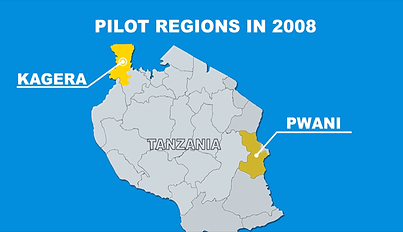Introduction:
Tanzania Mainland’s Ministry of Health (MoH) decided to transform its Health Information Systems (HISs) to enable health information access and support routine operations, management, and decision making in 2007. HISP Tanzania in collaboration with the University of Dar es Salaam (UDSM) and the University of Oslo (UiO) was engaged by the MoH to design and implement integrated HIS named District Health Information Software 2 (DHIS2) which combined a paper-based tools from several health programmes to improve the HIS performance and health outcomes.
Challenges of the previous HIS:
Before the introduction of DHIS2, data collection and reports compilation were done manually on a quarterly basis. Also, different tools were used to capture data for each department meaning that there was a lack of harmonization of reporting tools of different programs. This resulted in poor data for Health Workers, Supervisors, and Administrators. This affected the continuity of high-quality care at health facilities, assessing resources needed to improve service delivery, monitoring performance of systems and facilities, as well as making it difficult for policymakers to make informed decisions.
DHIS2 as a solution and National HIS rollout:
DHIS2 was introduced in 2007 when the MoH raised the needs for it as well as different stakeholders that were supporting the MoH. The evidence and lessons learned were documented and used to revise the systems. In 2008, DHIS2 was piloted in two regions of Tanzania, Pwani and Kagera regions. Then, in 2009 the UiO in collaboration with HISP Tanzania and UDSM presented the customized web based DHIS2 to the MoH, and this was accepted as a HMIS in Tanzania. The integration of DHIS2 with fragmented vertical programs such as malaria, TB/leprosy, RCH, HIV/AIDS was done in 2011 for a comprehensive data analysis. The DHIS2implementation involved different stakeholders, the MoH, Health Programmes, Implementing Partners, Donors and Technical supporters such as HISP Tanzania and UDSM.
In 2014, the rollout was done to the remaining 24 regions of Tanzania Mainland and associated districts’ health facilities. The DHIS2 was interoperable with systems such as eIDSR (Electronic Integrated Disease Surveillance and Response), HRHIS (Human Resources for Health Information Systems), MFL (Master Facility List), eLMIS (Logistics Management Information Systems) enabling health workers to cross-cut, analyze, and share data across organizations.
HISP Tanzania in collaboration with MoH, UDSM, and UiO capacitated the local teams including MoH staff, implementing partners, district and regional hospital staff, and data managers on software usage, data analysis, and basic and advanced DHIS2 features. This was somewhat difficult due to low level of understanding and low level of ICT literacy. This was mitigated by the use of cascaded training and cost-effective training approaches that accommodated many users, as well the use of champions to conduct on-the-job training, support, and mentoring.
Achievements:
At the National level: The central repository data across the country has made the government able to make evidence-based choices about how to best allocate health resources, by using high-quality, well-managed data to guide health policies and practices. Policymakers are empowered to make informed budgeting and planning choices for measured results.
At the Local level: Health facilities can fill in, use, own and analyze their data, also the use of DHIS2 has allowed Health workers to have data for better deliverance of services, track and manage supplies, and treat patients. Administrators are able to target supplies and staff to the areas that need them most.
Generally, the local capacity building created a sense of ownership and accountability at all levels, and hence sustainability of the systems after roll-out.
Hope for the future:
Although the government has made its efforts towards digitalization of HIS, important advances are already underway, and significant investments are still needed to strengthen health data systems and data use for the maximized impact. It is expected that in the future Tanzanians will access high-performing health care, use data accurately and enjoy better health services. This can be realized through the availability of data to Health workers for better deliverance of services, tracking and managing supplies. With the digitized HIS in Tanzania, there will be proper targeting and staffing to the areas that need them most, also empowered Policymakers to make informed budgeting and decisions.
Click the link below to view the video documentary on the journey to digitizing Tanzania Mainland HIS:


